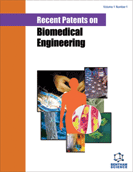Abstract
Heart valve disease is a serious problem, especially in aging societies. If left untreated, many patients can die from the disease itself or complications associated with it. However, many are denied open-heart replacement surgeries due to advanced age and co-morbidities. Thus, other solutions had to be explored. One successful solution is transcatheter heart valve implantation and is now seen as the only viable treatment. Transcatheter heart valve implantation is a minimally invasive technique of inserting an artificial heart valve by means of a catheter without requiring open heart surgery. However, challenges are always there with every successful technology. Obstacles that need to be overcome include anatomical constraints, appropriate delivery technique, satisfactory performance of the transcatheter heart valve and so on. In this review, these challenges associated with aortic and mitral valve will be analyzed due to the prevalence of the diseases associated with them. On top of that, design considerations, hemodynamic performance and current stateof- the-art and recent patents of aortic and mitral valves are discussed, with particular emphasis on their engineering aspects.
Keywords: Percutaneous, hemodynamic, stenosis, regurgitation, heart valve disease, clinical trial, aortic valve replacement, mitral valve replacement, valve prosthesis, valved stent, mock circulatory system, catheterisation, minimally invasive, valve design, heart valve implantation.
 5
5

